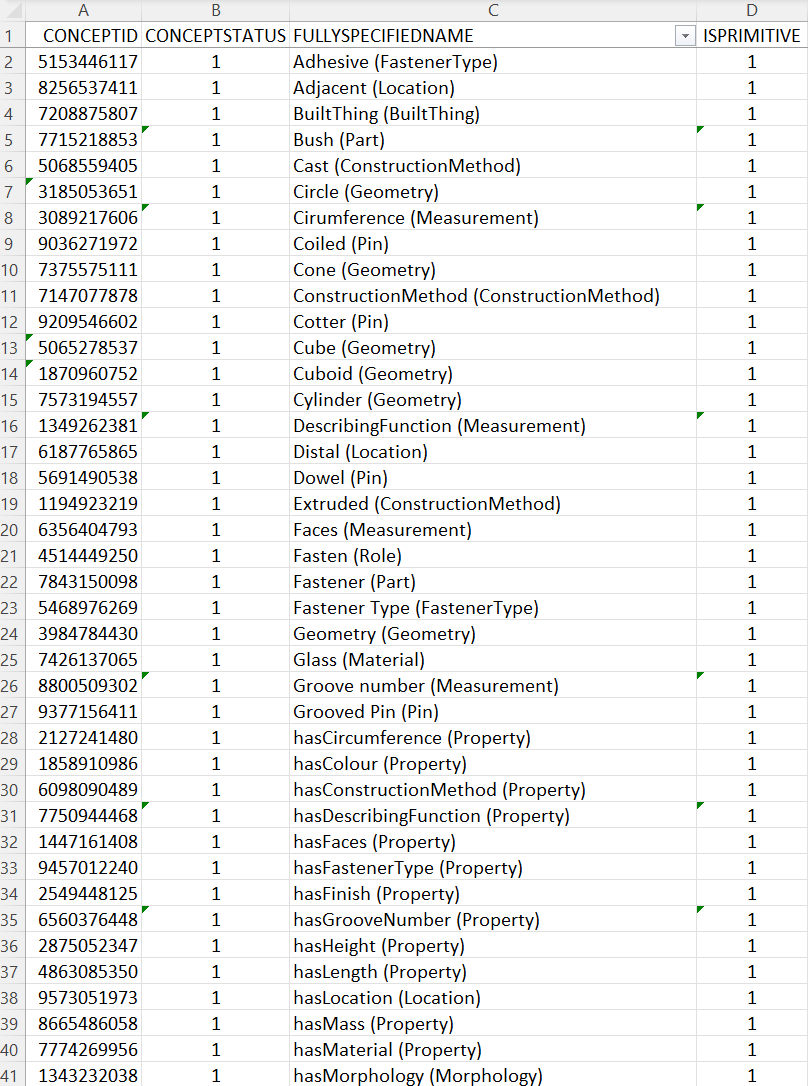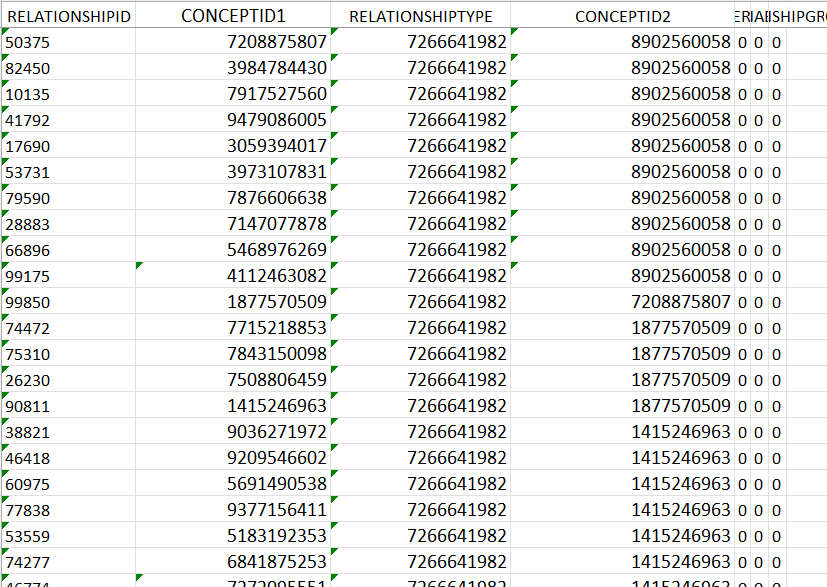The models and contexts in GELLO can be bespoke, that is they can be custom designed for a given implementation. In health FHIR could well be one such model, instead of the HL7 V2 VMR Medical Objects uses.
This section describes some simple two level models built and implemented against, in various non-health domains, purely by way of example.
Engineering example
This first example will walk through an idea of building a small mechanical engineering ontology that started life with reference to https://fastenerengineering.com/what-are-pins/ . This ontology then will be used in a GELLO query along with information model instance data.
The ontology was created using a traditional Concepts, Descriptions and Relationships table approach, which also borrowed column headers from SNOMED, to allow an easier import into a terminology server used to SNOMED. 97 concepts were assigned random alphanumeric identifiers and given hierarchical types:
A similar number of relationships were made, mostly of the Is_A type:
This example will be about a type of fastener called a pin. A small parent child table about grooved pins, coiled pins, dowel pins, cotter pins, split pins and slotted pins (phew!) was made and saved as an imported csv file. This has five levels of hierarchy with parents of Pin (Part), Fastener (Part) , Part (BuiltThing) and BuiltThing (BuiltThing). This table serves as a small reference terminology or ontology and the GELLO will make an appeal to it. It could be further populated out of the Relationships table. The table is used in an implies function and is shown here:


